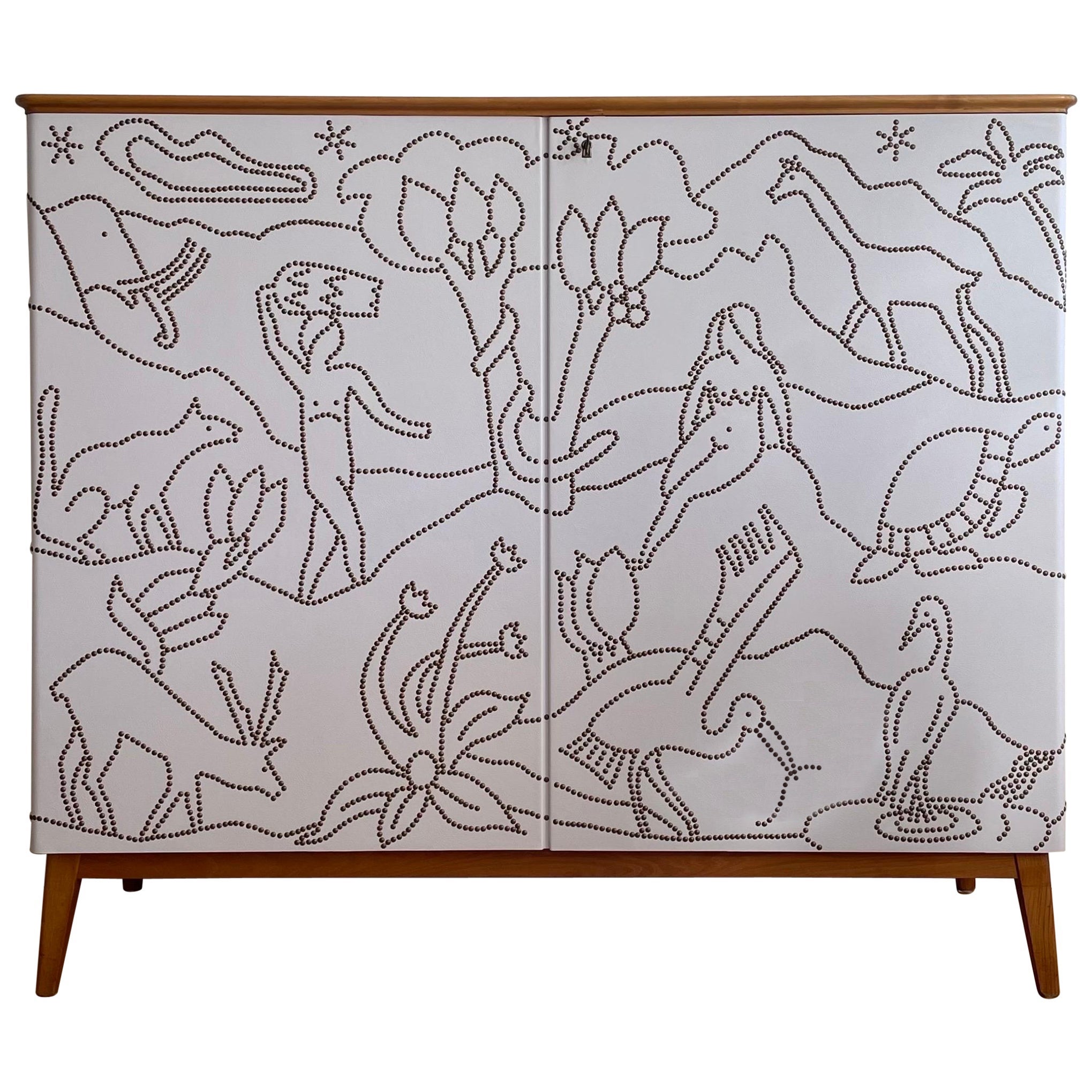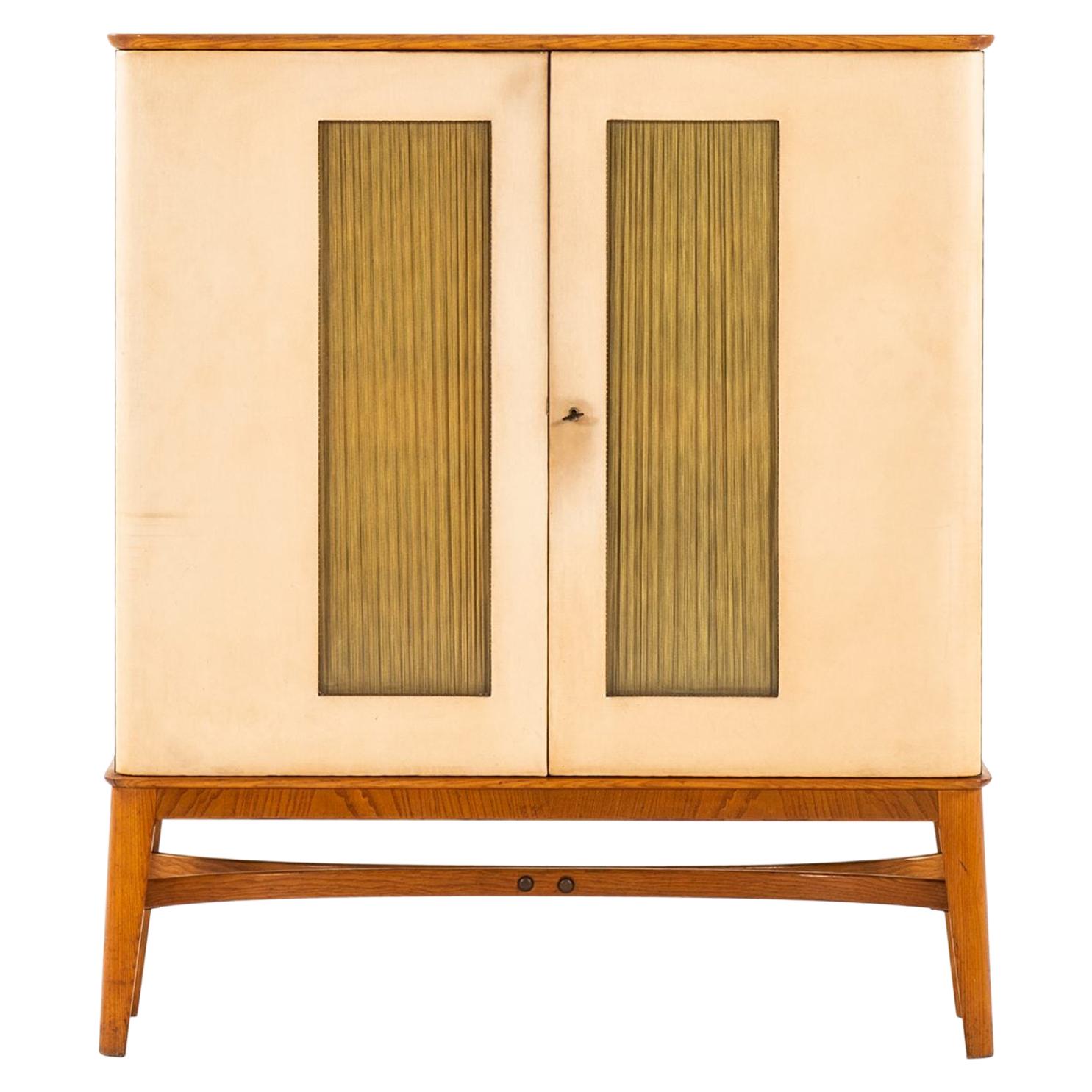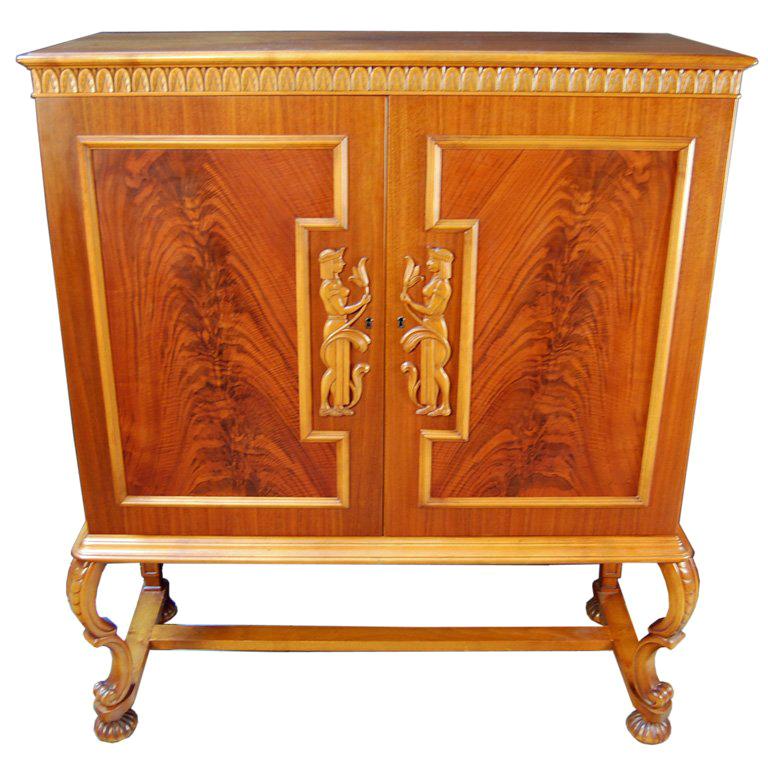Otto Zapf for ZapfDesign 'Softline' Cabinet in Grey
About the Item
- Creator:Otto Zapf (Designer)
- Dimensions:Height: 75.6 in (192 cm)Width: 26.38 in (67 cm)Depth: 25.2 in (64 cm)
- Style:Post-Modern (Of the Period)
- Materials and Techniques:
- Place of Origin:
- Period:
- Date of Manufacture:1969
- Condition:Wear consistent with age and use. Every item Morentz offers is checked by our team of 30 craftsmen in our in-house workshop. Special restoration or reupholstery requests can be done. Check ‘About the item’ or ask our design specialists for detailed information on the condition.
- Seller Location:Waalwijk, NL
- Reference Number:

Established in 2006, Morentz has a team of approximately 55 restorers, upholsterers, interior advisers and art historians, making it a gallery, workshop and upholstery studio, all in one. Every day, a carefully selected array of 20th-century furniture arrives from all over the world at the firm’s warehouse, where the team thoroughly examines each piece to determine what, if any, work needs to be done. Whether that means new upholstery or a complete restoration, Morentz's aim is always to honor the designer’s intention while fulfilling the wishes of the client. The team is up to any challenge, from restoring a single piece to its original glory to furnishing a large-scale hotel project.
- ShippingRetrieving quote...Ships From: Waalwijk, Netherlands
- Return PolicyA return for this item may be initiated within 10 days of delivery.
- Giuseppe Rivadossi for Officina Rivadossi Cabinet in WalnutBy Giuseppe Rivadossi, Officina RivadossiLocated in Waalwijk, NLGiuseppe Rivadossi, cabinet, walnut, Italy, 1970s This striking cabinet by Giuseppe Rivadossi pleases the eye by all means. The body of this piece is composed of large panels of wal...Category
Vintage 1970s Italian Post-Modern Cabinets
MaterialsWalnut
- Rare Otto Schulz Bar Cabinet in Walnut and Leather with Brass NailsBy Otto SchulzLocated in Waalwijk, NLOtto Schulz, bar cabinet, walnut veneer, leather, brass, glass, Sweden, circa 1940. This beautifully decorated bar piece was designed by Otto Schulz. It shows well-chosen proportion...Category
Vintage 1940s Swedish Scandinavian Modern Cabinets
MaterialsBrass
- Ernest Igl for Wilhelm Werndl Rare Cabinet in FiberglassBy Wilhelm Werndl, Ernest IglLocated in Waalwijk, NLErnest Igl for Wilhelm Werndl, cabinet, fiberglass, Germany, designed in 1970 This design truly resembles the ethos of the seventies – a bright and bold era – featuring the commonl...Category
Vintage 1970s German Post-Modern Cabinets
MaterialsFiberglass
- Ernest H. Igl for Wilhelm Werndl Cabinet in White FiberglassBy Wilhelm Werndl, Ernest IglLocated in Waalwijk, NLErnest Igl for Wilhelm Werndl, cabinet, fiberglass, Germany, designed in 1970 A bright and modern cabinet designed by Ernest Igl for Wilhelm Werndl in the 1970s. This design truly resembles the ethos of the seventies – a bright and bold era – featuring the commonly used material of that time named fiberglass. Ernest Igl strived for the creation of a cabinet that focused on functionality combined with an aesthetically pleasing design for daily use. This is discernible in the playful composition of sturdy lines and round corners executed in the whole construction. For this outspoken layout the designer used a pure white color. The lockable, sliding doors can be opened revealing a large storage compartment accompanied with a shelf. Taking every stylistic realization into account, this cabinet retro, without clashing with contemporary interiors. Ernest Hofmann...Category
Vintage 1970s German Post-Modern Cabinets
MaterialsFiberglass
- Franco Albini for Poggi Cabinets in TeakBy Franco Albini, PoggiLocated in Waalwijk, NLFranco Albini for Poggi, cabinets, model MB51, teak, Italy, circa 1957. Well-designed pair of cabinets by Franco Albini for Poggi, which features a simplistic design with sharp lin...Category
Vintage 1950s Italian Mid-Century Modern Cabinets
MaterialsTeak
- Hvidt & Mølgaard Nielsen for Søborg Møbelfabrik Cabinets in TeakBy Hvidt & MølgaardLocated in Waalwijk, NLPeter Hvidt & Orla Mølgaard-Nielsen for Søborg Møbelfabrik, cabinet, teak, Denmark, 1950s. Unique formation of conforming cabinets executed in solid teak designed by the Danish desi...Category
Vintage 1950s Danish Scandinavian Modern Shelves and Wall Cabinets
MaterialsTeak
- Vitra Otto Zapf Shelf System 'Wingset' Office Management SystemBy Otto ZapfLocated in Köln, NRWShelving system Wingset in black, sides chrome-plated, shelves & bins black, width 425 cm designed by Otto Zapf, produced by Vitra, 1980. 1 x Shelf Wingset consisting of 2 x box wit...Category
Vintage 1980s German Shelves
MaterialsMetal
- Swedish Modern 1940s Cabinet in Otto Schulz styleBy Otto Schulz 1Located in Örebro, SEThis is the Swedish Modern 1940s cabinet in Otto Schulz style. It comes with a beautiful shiny top, veneered in birch and legs in stained birch. Truly ele...Category
Vintage 1940s Swedish Scandinavian Modern Cabinets
MaterialsBronze
- Otto Schulz Cabinet Produced by Boet in SwedenBy Otto SchulzLocated in Limhamn, Skåne länVery rare cabinet designed by Otto Schulz. Produced by Boet in Sweden.Category
Vintage 1940s Swedish Scandinavian Modern Cabinets
MaterialsBrass
- Swedish Art Deco Neoclassical Carved Armoire Cabinet by Otto Schulz for BoetBy Otto Schulz, BoetLocated in Atlanta, GASwedish Neoclassical Credenza Cabinet of golden elm and crotch mahogany designed by Otto Schulz for Boet. Armoire features beautiful carved doors and legs. This stunning storage piec...Category
Vintage 1930s Swedish Neoclassical Revival Cabinets
MaterialsElm, Mahogany
- Otto Schulz, Swedish Modern Cabinet in Leather, Oak & Brass Nails, 1930sBy Boet, Otto SchulzLocated in Odense, DKAn exclusive cabinet attributed to the famous German born furniture designer Otto Schulz for Boet in Göteborg, Sweden. The front is covered in leather with brass nails, drawers and ...Category
Early 20th Century Scandinavian Baroque Cabinets
MaterialsBrass
- Art Deco/ Modernist Cabinet in the Style of Otto Schulz, Sweden, 1930sBy Otto SchulzLocated in Hägersten, SEModernist/Art Deco cabinet in the style of Otto Schulz. Produced in Sweden by unknown cabinetmaker during the 1930s. Stained birch legs and top with doors veneered in a checker board...Category
Vintage 1930s Swedish Scandinavian Modern Cabinets
MaterialsBirch, Elm, Oak





